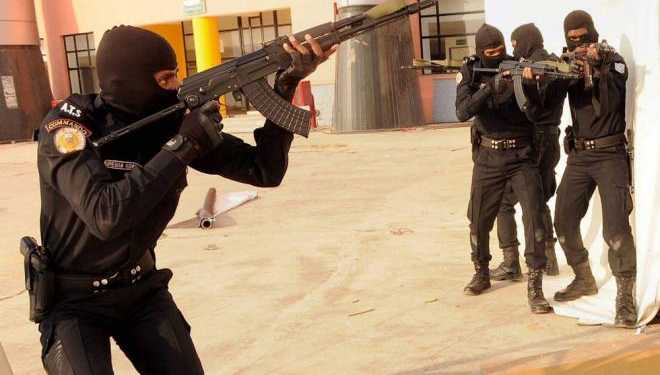One of the most dangerous ISIS terrorists has put India on the hit list but the problem for India runs much deeper than that. On 7th March a blast occurred in Bhopal-Ujjain train, and after that, a huge cache of weapons was recovered by UP Police after the encounter of Saifullah.
The arrest of 9 ISIS terrorists across 4 states in 6 different places in a joint operation of the Delhi special cell, the ATS of UP and Maharashtra, and the police of Andhra Pradesh, Punjab and Bihar at Mumbra (Maharashtra), Jalandhar (Punjab), Narkatiaganj (Bihar), Bijnor and Muzaffarnagar (both in Uttar Pradesh) shows how far the tentacles of ISIS has spread in India and with how remarkable precision the government is handling terrorism. But is this enough?
How has ISIS become so successful in such a short time despite so much government surveillance? The answer is not government failure but the radical interpretation of Islamic theology which ISIS has used to garner support from the radical elements of the country.
Additional Director General of Uttar Pradesh Police Daljit Chaudhary said, “The youth arrested are not in liaison with any group, they are self-motivated, self-guided and self-radicalized. But what the police didn’t consider in the case was the presence of ISIS material with them which proves their allegiance to them. ISIS doesn’t need to support them monetarily to influence their action; its ideology is enough to do the work.
“All those arrested are in the age group of 18 to 25 years and were living in different places like Mumbai, Jalandhar, and UP. We have also found that they were definitely influenced by the material available on the internet,” said UP ADG (Law and Order) Daljit Chaudhary.
So what on the Internet made them inclined to ISIS rather than other terror groups? The answer lies with the Hadith which says “If you see the black banners coming from the direction of Khurasan, join that army, even if you have to crawl over ice because among them will be Allah’s caliph the MAHDI” it goes on to say that no power will be able to stop them.”
Internet plays a very important role in radicalization which can be seen by its relevance in recent attacks ‘The Emergence of Prophecy: The Black Flags of Khorasan a 13-minute video, which depicts the wars in Iraq and Afghanistan as a sign of the prophecy’s fruition, summons Muslims to join the battle, was part of a YouTube playlist created by the slain 2013 Boston Marathon bomber Tamerlan Tsarnaev and was one of prime motivator for the event. This is the prophecy that ISIS is cashing on.
Khurasan lies in present day Afghanistan and that’s why they are concentrating more on Afghanistan now and are trying to shift area of operation to south Asia. The Americans dropped MOAB in Afghanistan just to stop the transition.
According to police the arrested terrorists got in touch with each other over the internet and were planning something big. These self-radicalized youth pose a greater threat to India as can be seen in case of terror attacks in Europe. Taking the high population density of India’s urban clusters and the police:people ratio, even a single attack can be calamitous. They might be in small groups but they attack densely populated areas as we have seen during 2016 Nice Attack and Kanpur Train Tragedy in India for maximum casualties.
As for Taliban and Al-Qaeda in whose lists India rarely featured, ISIS is far more dangerous, far more ambitious with much more devious designs.
Moreover, the government has put 2000 madrassas around Bijnor(UP) under the scanner for radicalization which shows how fertile is the ground for proliferation of ISIS in India.
The situation is already alarming, the government of India should act fast and tough to put a stop to this radicalization or else the consequences would be grave for negligence.


































